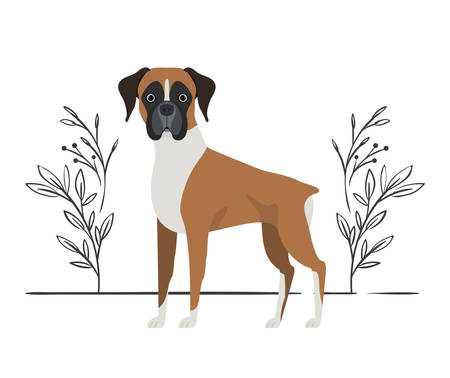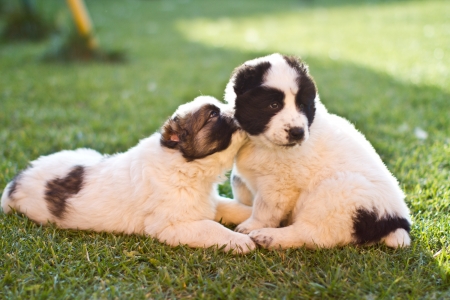Recognising Common Canine Emergencies
As devoted dog owners in the UK, it is vital to stay alert and well-informed about the most common emergencies our four-legged friends may encounter. Quick recognition can make all the difference, helping you respond effectively before professional help arrives. British dogs, much like their owners, face unique risks shaped by our environment and lifestyle. Road traffic accidents are unfortunately a frequent hazard, especially in busy towns or near countryside lanes where dogs might dart unexpectedly. Heatstroke, while rare due to our generally mild climate, has become an increasing concern during the recent spate of unexpected heatwaves. And let us not forget chocolate poisoning—a particular risk around Christmas, Easter, and other celebrations when tempting treats are often within reach. The table below outlines these typical emergencies and their early warning signs to help you act promptly:
| Emergency | Common Causes in the UK | Warning Signs |
|---|---|---|
| Road Traffic Accidents | Escaping from garden, off-lead walks near roads | Limping, bleeding, rapid breathing, shock |
| Heatstroke | Unusually hot weather, closed cars, vigorous exercise in sun | Panting excessively, drooling, weakness, collapse |
| Chocolate Poisoning | Sweets left unattended during holidays or gatherings | Vomiting, restlessness, rapid heart rate, seizures |
By familiarising yourself with these scenarios and symptoms, you can offer your beloved companion the swift care they deserve while waiting for veterinary assistance. Being prepared is not just responsible—it’s an expression of love and commitment to your dog’s wellbeing.
Building Your Dog-Friendly First Aid Kit
As a responsible dog owner in the UK, being prepared for common emergencies is a true act of care. The British countryside, urban parks, and unpredictable weather all present unique hazards, so assembling a tailored first aid kit is essential. Fortunately, most items can be easily sourced from your local chemist or pet shop. Here’s what every UK dog owner should have at hand:
Essential Items for Your Dog’s First Aid Kit
| Item | Purpose | Where to Buy |
|---|---|---|
| Sterile Saline Solution | For cleaning wounds and eyes | Chemists & Pet Shops |
| Non-Adhesive Dressings | To cover cuts and scrapes without sticking to fur | Chemists & Pet Shops |
| Cohesive Bandages (Vet Wrap) | For securing dressings—sticks to itself, not fur | Pet Shops |
| Tweezers (Tick Remover) | To safely remove ticks and splinters, especially after countryside walks | Chemists & Pet Shops |
| Blunt-Ended Scissors | For cutting bandages or fur around wounds | Chemists & Pet Shops |
| Disposable Gloves | For hygiene when treating injuries or cleaning up messes | Chemists |
| Antiseptic Wipes (Pet Safe) | To clean minor wounds or paws after muddy walks | Pet Shops |
| Muzzle or Soft Cloth Strip | Even gentle dogs may bite when in pain—essential for safety during treatment | Pet Shops |
UK-Specific Hazards to Consider
- Add antihistamines (vet-approved) for insect stings—common in summer months across the UK.
- Paw balm helps protect against salted pavements in winter or hot tarmac in summer.
- A foil blanket can help prevent shock or hypothermia during chilly British weather.
- If you frequent rural areas, include a tick removal tool and check your dog regularly.
Caring Thoughtfully, Acting Swiftly
Your dog’s well-being is worth every ounce of preparation. By building a comprehensive first aid kit tailored for life in the UK, you’re ready to offer comfort and protection whenever adventure—or misadventure—calls. Remember to check expiry dates regularly and refresh supplies after each use, ensuring help is always close at hand for your loyal companion.

3. Immediate Steps for Injuries and Accidents
When your dog experiences an injury or accident, quick and calm action is crucial. Understanding how to respond effectively to cuts, broken bones, and wounds can make all the difference before you reach your local vet. Ensuring both your safety and your dog’s comfort should always come first.
Assessing the Situation
Before rushing in, check that the environment is safe for you and your pet. Approach your dog gently—an injured dog may be scared or in pain, so speak softly and avoid sudden movements. If your dog appears aggressive due to pain, use a muzzle if you have one, or create a makeshift muzzle with a soft cloth.
First Aid for Common Injuries
| Type of Injury | What To Do |
|---|---|
| Cuts & Scrapes | Gently clean the wound with saline solution or lukewarm water. Apply light pressure with a clean cloth to stop bleeding. Cover with a sterile dressing if possible. |
| Broken Bones | Avoid moving the limb unnecessarily. Support the area with a towel or blanket while transporting your dog to the vet. Do not attempt to set the bone yourself. |
| Puncture Wounds | Do not remove objects stuck in the wound. Stabilise the object if possible and seek veterinary help immediately. |
Comfort and Safety First
Keep your dog warm and as calm as possible by wrapping them in a blanket and speaking gently. Avoid giving food or water in case surgery is needed. Always contact your vet for further advice—even minor injuries can become serious without proper care.
Key Takeaway
Your prompt response can prevent further harm and ease your dog’s distress. By staying prepared and knowing these basic first aid steps, you’re offering your loyal companion the best chance at recovery while showing just how much you care.
4. Responding to Poisoning and Allergic Reactions
Living in the UK means our canine companions are exposed to a unique range of hazards, from garden chemicals to native plants. Quick and compassionate action is vital if you suspect your dog has ingested something harmful or is having an allergic reaction.
Common UK Poisons and Allergens
| Hazard | Where Found | Symptoms in Dogs |
|---|---|---|
| Slug Pellets (Metaldehyde) | Gardens, allotments | Tremors, drooling, seizures, vomiting |
| Blue-Green Algae | Ponds, lakes (especially in summer) | Weakness, vomiting, diarrhoea, collapse |
| Daffodil Bulbs & Flowers | Parks, gardens | Nausea, vomiting, heart irregularities |
| Xylitol (in sugar-free products) | Cakes, chewing gum at home | Lethargy, vomiting, loss of coordination, seizures |
| Bee or Wasp Stings | Gardens, countryside walks | Swelling, redness, difficulty breathing (if allergic) |
What To Do If Your Dog Is Poisoned or Has an Allergic Reaction
- Stay calm and act quickly.
- Remove your dog from the source. Keep any packaging or plant parts for identification by the vet.
- Do not try to make your dog vomit unless instructed by a vet.
- Call your local vet or an emergency animal poison helpline immediately:
- If your dog is having trouble breathing or collapses:
- Allergic Reaction: Seek urgent veterinary attention. For mild swelling from stings, apply a cool compress if tolerated.
- Keep your dog calm and warm while transporting them to the vet.
Preventing Poisoning and Allergic Reactions at Home and Outdoors
- Avoid using slug pellets or choose pet-safe alternatives.
- Keenly supervise dogs in areas with known hazardous plants like daffodils and foxgloves.
- Cautiously dispose of food waste and keep human treats out of reach.
- During walks near water sources, watch for blue-green algae warnings posted by local councils.
Your quick response can save lives. Always err on the side of caution—when in doubt, consult your vet promptly. Our love for dogs shines brightest when we protect them from harm with knowledge and care.
5. Knowing When to Contact Your Vet or the RSPCA
As devoted dog owners in the UK, recognising when your pet needs immediate professional attention is just as vital as offering first aid. Some situations require swift action from you, but others demand expert intervention. It’s crucial to identify red flags that signal a medical emergency and know how to access local veterinary services or animal welfare organisations like the RSPCA for guidance.
Key Warning Signs That Require Urgent Help
| Symptom | Possible Cause | Action Needed |
|---|---|---|
| Difficulty breathing or choking | Obstruction, allergic reaction, trauma | Contact your vet immediately |
| Severe bleeding that won’t stop | Deep wound, major injury | Apply pressure and seek urgent veterinary care |
| Collapse or loss of consciousness | Shock, poisoning, heart issue | Emergency vet visit required |
| Uncontrollable vomiting/diarrhoea | Poisoning, infection, obstruction | Consult your vet promptly |
| Seizures lasting more than a few minutes | Neurological problem, toxin ingestion | Call your vet without delay |
How to Contact Local Veterinary Services and Animal Welfare Organisations
If you notice any of the signs above or feel unsure about your dogs condition, don’t hesitate to reach out for help. Here are some steps you can take:
- Find your nearest vet: Most veterinary surgeries in the UK offer emergency numbers outside of regular hours. Save these contacts in your mobile phone.
- The RSPCA (Royal Society for the Prevention of Cruelty to Animals): If you suspect neglect or abuse, or need advice on animal welfare, call their 24-hour cruelty line on 0300 1234 999.
- PDSA and Blue Cross: These charities also offer veterinary advice and support for pet owners who may struggle with costs.
Your Emergency Checklist
- Know your local vet’s address and number.
- Keep the RSPCA helpline accessible.
- If travelling around the UK, note down details for nearby vets.
- If in doubt, always err on the side of caution and seek professional advice.
Together for Our Dogs’ Wellbeing
Your awareness and swift action could save your beloved companion’s life. In times of distress, reaching out for expert help is a sign of true care and responsibility—ensuring every dog across Britain receives the timely support they deserve.
6. Staying Informed: Courses and Community Support
When it comes to canine first aid, knowledge is more than just power—it’s a way of showing love and responsibility towards our four-legged companions. In the UK, dog owners are fortunate to have access to a wide range of resources that can help them stay informed and prepared for emergencies. From hands-on workshops to vibrant online communities, there are plenty of ways to keep your skills sharp and your confidence high.
Finding the Right Learning Opportunity
Whether you’re new to dog ownership or a seasoned pet parent, continuous learning is key. Consider enrolling in a certified canine first aid course offered locally or online. Many reputable organisations, such as the British Red Cross and The Dogs Trust, provide training sessions tailored specifically for dog owners.
| Learning Option | Description | Where to Find |
|---|---|---|
| Local Workshops | In-person training with practical demonstrations and real-time feedback. | Vet clinics, community centres, animal shelters |
| Online Courses | Flexible learning at your own pace with video tutorials and quizzes. | British Red Cross, PDSA, RSPCA websites |
| Community Groups | Shared experiences, advice, and emotional support from fellow dog owners. | Social media groups, local meet-ups, neighbourhood apps like Nextdoor |
Benefits of Engaging with Pet Owner Communities
The journey of caring for a dog is rarely walked alone. By joining supportive networks—whether online forums or local walking groups—you’ll gain not only practical tips but also encouragement during challenging times. These communities often organise awareness events, share updates on local hazards (such as seasonal toxins), and recommend trusted trainers or courses.
Your Ongoing Commitment Matters
Staying informed is an act of compassion. By dedicating time to learn and connect with others who share your passion for animal welfare, you create a safer world for your beloved pet and contribute to a caring culture within your community. Remember: first aid knowledge is not just for emergencies—it empowers you every day as a responsible UK dog owner.

